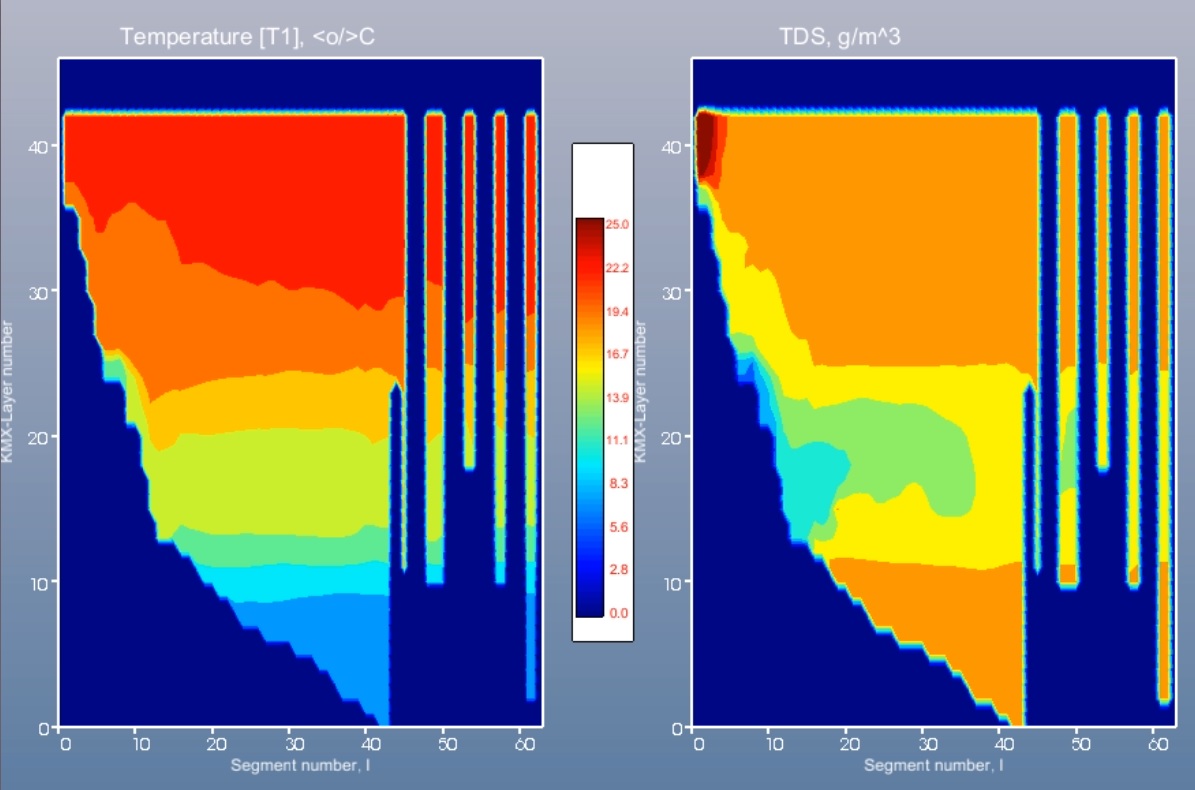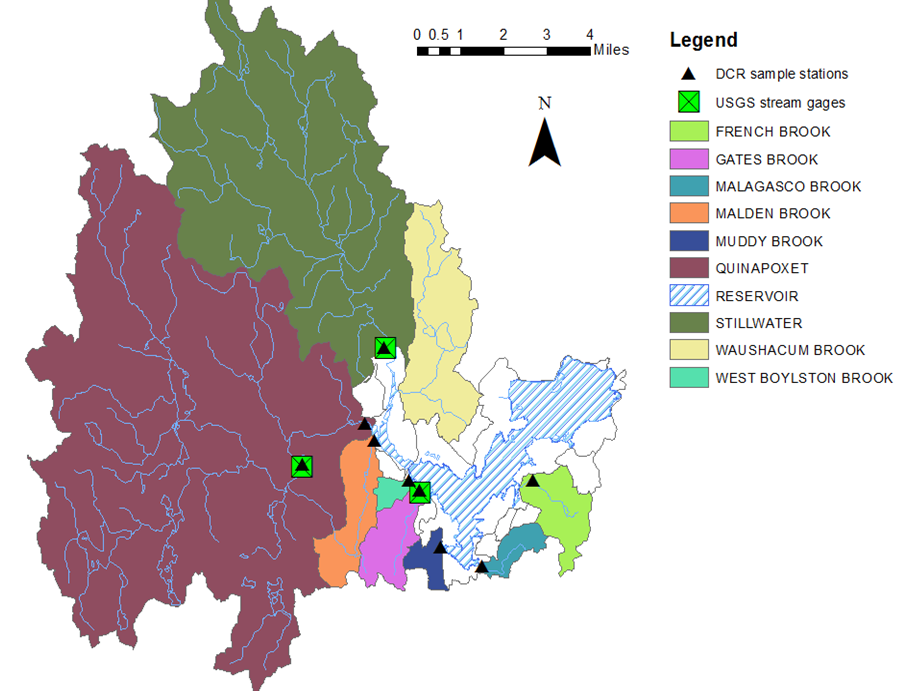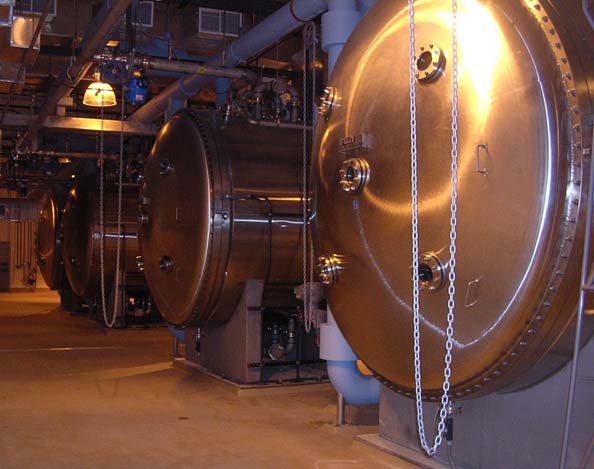Water Quality in DCR Reservoirs 2014-2016
UMass EWRE Program Research Project
The Quabbin and Wachusett Reservoir System is the major drinking water source for 61 communities in the Boston metropolitan area and Central Massachusetts (approximately one-third of the Massachusetts population). The Wachusett Reservoir was built between 1897 and 1908 by damming the south branch of the Nashua River and holds approximately 0.25 billion m3 (65 billion gallons) of water. By the 1930’s, Boston’s increasing demand for water spurred the development of the Quabbin Reservoir, which has a volume of about 1.6 billion m3 (412 billion gallons). When needed, water is transferred from the Quabbin Reservoir about 30 miles east through the Quabbin Aqueduct to the Wachusett Reservoir. Water is withdrawn at the Cosgrove drinking water intake, treated at the J.J. Carroll Water Treatment Plant, and sent to Boston via the Metrowest Water Supply Tunnel; treatment and transmission are operated by the Massachusetts Water Resources Authority (MWRA). The UMass project is aimed at providing assistance in several key areas to the Department of Conservation and Recreation (DCR), the body responsible for managing the watershed and maintaining the source water quality and the MWRA.
Task 1: Reservoir Modeling
Mathematical models can simulate the response of DCR reservoirs to a variety of influences, and can serve as aids for operational decision making or for making long-term policy decisions. Factors that influence reservoirs include those which may be outside of DCR control, such as loadings of water quality constituents, hazardous waste spills, and extreme weather events. Other factors such as water release and transfer policies, water quality control procedures, and watershed protection practices may be controllable by DCR or MWRA. Both reservoir water quantity and quality respond to these various influences. For models to be effective tools they must be proven to be reliable predictors of reservoir behavior when tested against a substantial body of data. UMass models processes in the Wachusett Reservoir using the two-dimensional CE-QUAL W2 model. This work will include developing and maintaining model-ready databases and calibrated models for Wachusett Reservoir.

Task 2: Stormwater Runoff: Water Quality Impacts and Management
Components of prior DCR/UMass research projects addressing water supply reservoirs have included tasks that address watershed dynamics and management, including the nature and transport of water quality constituents such as natural organic matter (NOM), nutrients (N, P), and microorganisms. Topics of interest to watershed management include impacts of climate change, use of remote sensing techniques, and stormwater effects on water quality. Data collected by the DCR will be used to characterize seasonal and event-based stormwater runoff patterns and changes in nutrient mass loadings to the reservoir from the watershed. Information on mass loading dynamics will be used to better understand impacts of climate change and storm events on reservoir water quality.

Task 3: Assessment of Ozonation Impacts on Taste and Odor Compounds
Wachusett Reservoir provides raw water to the Massachusetts Water Resources Authority (MWRA) Carroll Water Treatment Plant where ozonation, UV disinfection, chloramination and corrosion control are utilized to produce drinking water for the Boston metropolitan area. The Wachusett Reservoir is a healthy ecosystem and as such, supports the growth of phytoplankton including various species of algae and cyanobacteria (also known as blue-grean algae). Some of phytoplankton can cause taste and odor complaints from consumers. The purpose of this task is to determine if ozone treatment is effective in the destruction of algal taste and odor causing compounds. It is also important to study the effect of ozone dose on the extent of reaction.

Recent Publications
Jeznach, L. C., Tobiason, J. E., Ahlfeld, D. P. (2014). "Modeling Conservative Contaminant Impacts on Reservoir Water Quality." JOURNAL - American Water Works Association, 106(6), E295-E306.
Hagemann, M., Park, M. (2014). “Trends in Tributary Water Quality in a Water Supply Reservoir”. JOURNAL - American Water Works Association, 106(4), E212-E224.
Principal Investigators
Research Assistants
- Mark Hagemann
- Lillian C. Jeznach
- Aarthi Mohan
This project is funded by the MA Division of Conservation and Recreation.
Background Information:
Related UMass Research Projects:
Secure UMass Research Site
Current Project at UMass:
- Research Proposal submitted by UMass
- Revised Work Plan
Other Data

